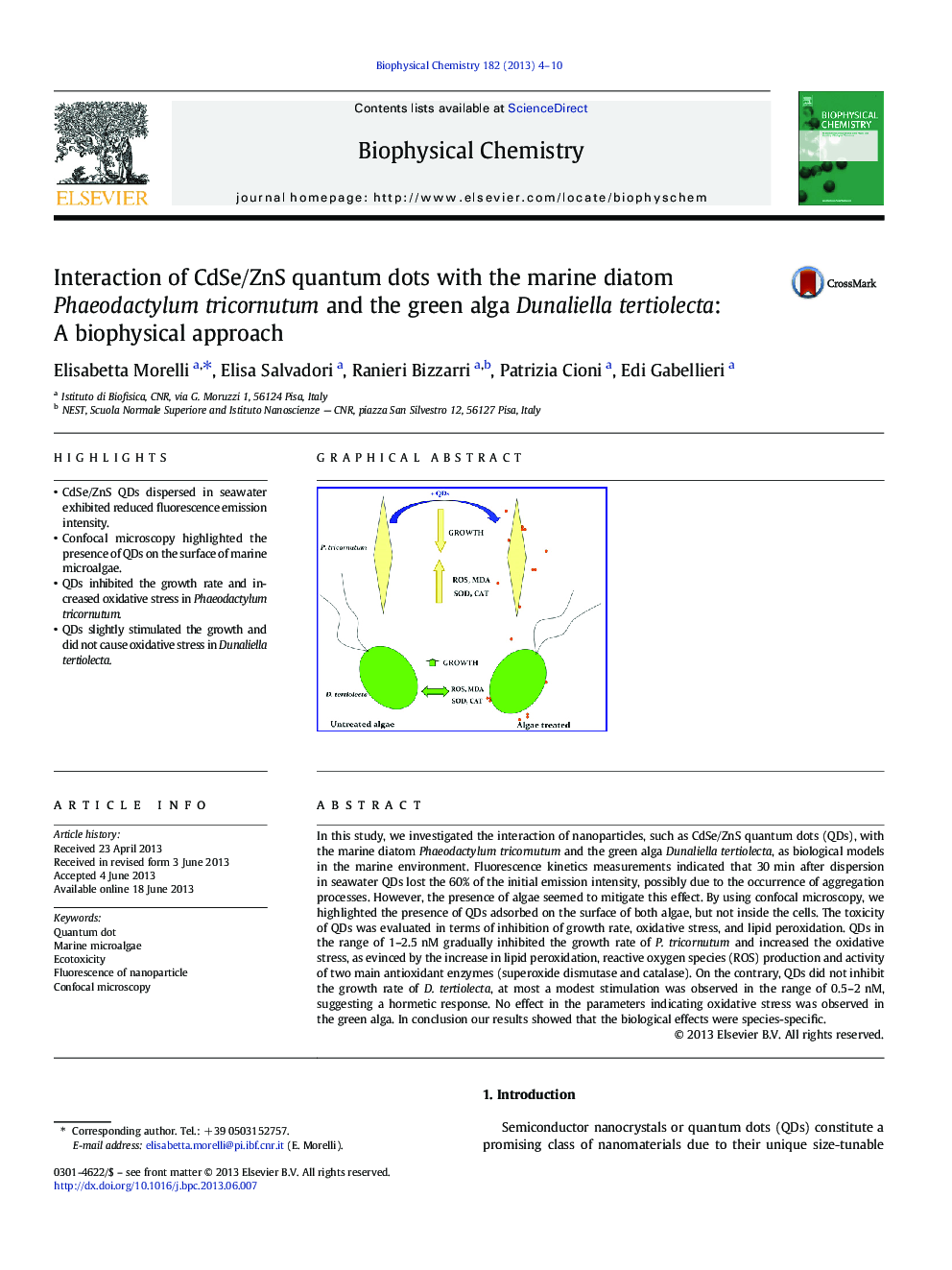| Article ID | Journal | Published Year | Pages | File Type |
|---|---|---|---|---|
| 5371103 | Biophysical Chemistry | 2013 | 7 Pages |
â¢CdSe/ZnS QDs dispersed in seawater exhibited reduced fluorescence emission intensity.â¢Confocal microscopy highlighted the presence of QDs on the surface of marine microalgae.â¢QDs inhibited the growth rate and increased oxidative stress in Phaeodactylum tricornutum.â¢QDs slightly stimulated the growth and did not cause oxidative stress in Dunaliella tertiolecta.
In this study, we investigated the interaction of nanoparticles, such as CdSe/ZnS quantum dots (QDs), with the marine diatom Phaeodactylum tricornutum and the green alga Dunaliella tertiolecta, as biological models in the marine environment. Fluorescence kinetics measurements indicated that 30Â min after dispersion in seawater QDs lost the 60% of the initial emission intensity, possibly due to the occurrence of aggregation processes. However, the presence of algae seemed to mitigate this effect. By using confocal microscopy, we highlighted the presence of QDs adsorbed on the surface of both algae, but not inside the cells. The toxicity of QDs was evaluated in terms of inhibition of growth rate, oxidative stress, and lipid peroxidation. QDs in the range of 1-2.5Â nM gradually inhibited the growth rate of P. tricornutum and increased the oxidative stress, as evinced by the increase in lipid peroxidation, reactive oxygen species (ROS) production and activity of two main antioxidant enzymes (superoxide dismutase and catalase). On the contrary, QDs did not inhibit the growth rate of D. tertiolecta, at most a modest stimulation was observed in the range of 0.5-2Â nM, suggesting a hormetic response. No effect in the parameters indicating oxidative stress was observed in the green alga. In conclusion our results showed that the biological effects were species-specific.
Graphical abstractDownload full-size image
